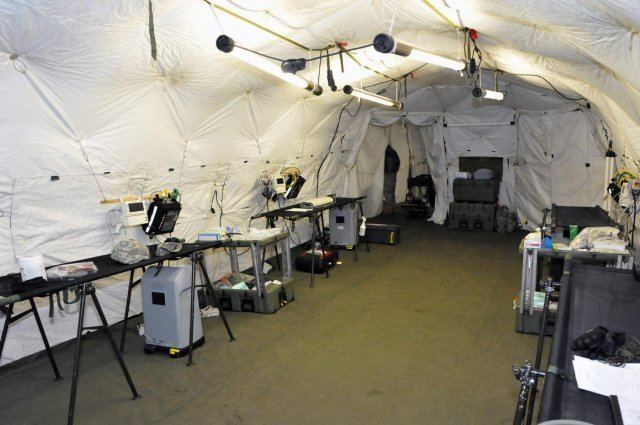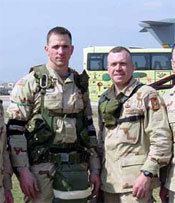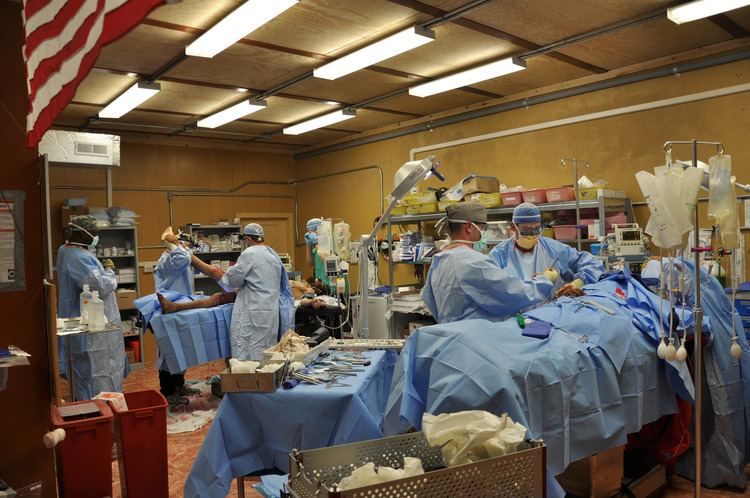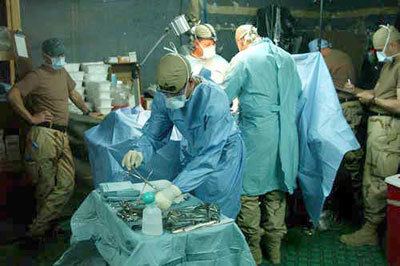 | ||
In the United States Army, Medical Detachments (Forward Surgical), popularly known as Forward Surgical Teams (FST), are small, mobile surgical units fielded since the 1990s. FSTs are utilized in a variety of ways, and can fielded with support elements, including a Forward Support Medical Company (FSMC), Area Support Medical Company (ASMC), Brigade Medical Company also known as C-Med or in some cases stand alone (although The FST is not designed, staffed, or equipped for standalone operations or for conducting sick-call operations. Augmentation requirements are discussed in FM 4-02.25) to provide a surgical capability at Role 2 for those patients unable to survive MEDEVAC to Role 3 (hospital) care. Surgeons perform damage control surgery on combat casualties within the "golden hour" of injury whenever possible. Casualties can then be packaged for medical evacuation to a higher level of care. The FST typically includes 20 staff members: 4 surgeons, 3 RNs, 2 certified registered nurse anesthetists (CRNAs), 1 administrative officer, 1 detachment sergeant, 3 licensed practical nurses (LPN)'s, 3 surgical techs and 3 medics.
Contents

By doctrine, given in ATP 4-02.5 (May 2013) Chapter 3 section 10, and ARTEP 8-518-10, the team is capable of continuous operations with a divisional or non-divisional medical company for up to 72 hours with a planned caseload of 30 critical patients. The FST can sustain surgery for 24 total operating table hours and has the ability to separate into two teams while jumping from one site to another. Sustained split operations are common in Iraq and Afghanistan, although not supported by current doctrine in FM 8-10-25. A functional operating room can be established within one and a half hours of being on scene and break down to move to a new location within two hours of ceasing operations.

FSTs are currently deployed in both Afghanistan and Iraq.
Organization
The forward surgical team is organized into four functional areas:

Equipment

The Forward Surgical Team equipment and supplies are packed into four HMMWVs each with an M1101 trailer and two LMTV 2.5 ton cargo trucks each with a M1082 cargo trailer. Units are normally augmented with two trailers mounting a power generator and an air conditioning system. These trailers are referred to as ECU [Environmental Control Units] or GET [Generator/ECU Trailers]. When so equipped, two of the M1101 trailers are removed.
The airborne Forward Surgical Team can be slingloaded onto cargo helicopters and moved by the headquarters unit.

